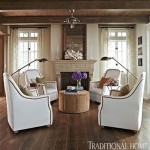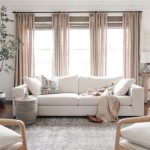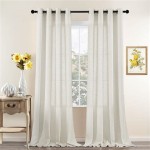Window Seats: Enhancing Living Rooms with Comfort and Functionality
Window seats represent a time-honored architectural feature, offering both aesthetic appeal and practical benefits to living spaces. These built-in or freestanding structures, typically positioned beneath a window, provide seating, storage, and a connection to the natural environment. The integration of a window seat can transform a living room from a purely functional area into a cozy and inviting retreat.
The popularity of window seats stems from their versatility. They can be incorporated into various architectural styles, from traditional to contemporary, and customized to suit the specific needs and preferences of the homeowner. Whether used as a reading nook, a casual dining spot, or simply a place to relax and enjoy the view, window seats can significantly enhance the functionality and aesthetic value of a living room.
This article will explore the various aspects of window seats in living rooms, including design considerations, functional benefits, and construction options. It will also examine the factors that contribute to the overall success of a window seat project, ensuring that it seamlessly integrates into the living room and enhances the overall living experience.
Design Considerations for Window Seats
The design of a window seat directly impacts its functionality and aesthetic appeal. Careful consideration should be given to several factors to ensure that the finished product meets the homeowner's needs and complements the existing décor. These factors include size, shape, style, and materials.
Size and Shape: The size of the window seat should be proportionate to the size of the room and the window itself. A small window seat in a large room may appear insignificant, while an oversized window seat in a small room can overwhelm the space. The shape of the window seat can also influence its functionality and aesthetic appeal. Rectangular window seats are the most common and versatile, but curved or angled designs can add visual interest and create a unique focal point. The depth of the seat should be comfortable for sitting, typically between 18 and 24 inches. The height should be similar to that of a standard chair, around 18 inches, but this can be adjusted to suit individual preferences.
Style: The style of the window seat should complement the overall style of the living room. In a traditional setting, a window seat with classic moldings and details may be appropriate. In a modern setting, a minimalist window seat with clean lines and a simple design may be more suitable. The style of the window seat can also be influenced by the architectural style of the house. For example, a Victorian-era home may benefit from a window seat with ornate carvings and detailing, while a mid-century modern home may call for a sleek and streamlined design. The choice of fabric and cushions can also play a significant role in defining the style of the window seat. Upholstery with floral patterns and intricate designs can enhance a traditional aesthetic, while solid colors and geometric patterns can contribute to a more modern look.
Materials: The materials used to construct the window seat should be durable, aesthetically pleasing, and compatible with the existing décor. Wood is a popular choice for window seats, offering warmth, durability, and a classic aesthetic. Different types of wood, such as oak, maple, and pine, can be used depending on the desired look and feel. Painted wood is also a common option, allowing for customization and coordination with the existing color scheme. Other materials, such as MDF (medium-density fiberboard) and plywood, can be used for the structural components of the window seat, but these materials may require a veneer or paint finish to enhance their appearance. The choice of materials for the cushions and upholstery should also be carefully considered. Durable and stain-resistant fabrics are ideal for window seats that will be used frequently. Natural fibers, such as cotton and linen, offer a comfortable and breathable seating surface, while synthetic fibers, such as polyester and acrylic, are more resistant to wear and tear. The choice of cushion fill can also impact the comfort and support of the window seat. Foam cushions provide firm support, while feather or down cushions offer a more plush and luxurious feel.
In addition to these design considerations, it is important to take into account the existing architectural features of the living room. The window seat should be designed to seamlessly integrate into the existing space, complementing the existing windows, walls, and flooring. The placement of the window seat should also be carefully considered to maximize natural light and views.
Functional Benefits of Window Seats
Beyond their aesthetic appeal, window seats offer a range of functional benefits that can enhance the living room experience. These benefits include seating, storage, and enhanced natural light.
Seating: The primary function of a window seat is to provide additional seating in the living room. This can be particularly useful in smaller living rooms where space is limited. A window seat can serve as a comfortable alternative to traditional chairs or sofas, providing a cozy spot to relax, read, or simply enjoy the view. The seating capacity of a window seat can be customized to suit the needs of the homeowner. A small window seat may comfortably accommodate one or two people, while a larger window seat can seat several people. The addition of cushions and pillows can enhance the comfort and support of the window seat, making it an inviting space to spend time. Window seats also provide an opportunity for more intimate seating arrangements than traditional sofas, fostering conversation and connection.
Storage: Many window seat designs incorporate built-in storage, providing a practical solution for organizing and decluttering the living room. Storage can be integrated into the window seat in several ways, including drawers, cabinets, or lift-up benches. Drawers are ideal for storing smaller items, such as books, magazines, or games. Cabinets can be used to store larger items, such as blankets, pillows, or seasonal decorations. Lift-up benches provide convenient access to storage space beneath the seating surface. The storage capacity of a window seat can be customized to suit the specific needs of the homeowner. A window seat with ample storage can help to keep the living room tidy and organized, reducing clutter and creating a more relaxing and inviting atmosphere. The storage space can also be used to store items that are frequently used in the living room, such as remote controls, reading glasses, or craft supplies, making them easily accessible.
Enhanced Natural Light: Window seats are typically positioned beneath windows, maximizing exposure to natural light. Natural light can have a positive impact on mood and well-being, creating a brighter and more cheerful living space. A window seat provides a comfortable spot to bask in the sunlight, read a book, or simply enjoy the view. The placement of the window seat can also influence the amount of natural light that enters the room. A window seat positioned on a south-facing window will receive more direct sunlight than a window seat positioned on a north-facing window. The addition of sheer curtains or blinds can help to filter the sunlight and prevent glare, creating a more comfortable and inviting space. The natural light can also enhance the aesthetic appeal of the living room, highlighting architectural details and creating a sense of spaciousness.
In addition to these functional benefits, window seats can also contribute to the overall value of the home. A well-designed and properly constructed window seat can be a significant selling point, attracting potential buyers and increasing the perceived value of the property.
Construction Options for Window Seats
The construction of a window seat can vary depending on the desired design, functionality, and budget. There are several options available, ranging from simple DIY projects to professionally installed custom builds.
DIY Window Seats: For homeowners with basic woodworking skills, a DIY window seat can be a cost-effective and rewarding project. A simple DIY window seat can be constructed using lumber, plywood, and basic tools. The design can be as simple or as complex as desired, depending on the homeowner's skill level and preferences. DIY window seats offer a high degree of customization, allowing homeowners to tailor the design to their specific needs and the existing décor. However, DIY projects require time, effort, and careful planning to ensure a successful outcome. It is important to have a clear understanding of the construction process and to use appropriate safety measures. Online resources and tutorials can provide guidance and inspiration for DIY window seat projects.
Semi-Custom Window Seats: Semi-custom window seats offer a compromise between DIY projects and fully custom builds. These window seats are typically purchased from furniture stores or home improvement retailers and can be customized to some extent to fit the existing space. Semi-custom window seats offer a wider range of design options and materials than DIY projects, but they may not be as customizable as fully custom builds. These options often come in predetermined sizes and styles, so finding the perfect fit for a specific space may be challenging. Semi-custom window seats can be a good option for homeowners who want a professional-looking window seat without the expense of a fully custom build.
Custom Window Seats: Custom window seats are the most expensive option, but they offer the greatest degree of customization. These window seats are designed and built specifically for the homeowner, taking into account their unique needs, preferences, and the existing architectural features of the living room. Custom window seats can be built by professional carpenters or contractors who have experience in designing and building custom furniture. Custom builds allow for complete control over the design, materials, and functionality of the window seat. A professional can ensure that the window seat is properly constructed and seamlessly integrated into the living room. While custom window seats are more expensive, they can be a worthwhile investment for homeowners who want a truly unique and high-quality addition to their living space.
Regardless of the construction option chosen, it is important to ensure that the window seat is properly installed and securely anchored to the wall or floor. This will prevent the window seat from tipping over or shifting, ensuring the safety of users. It is also important to consider the weight capacity of the window seat and to reinforce the structure if necessary. A properly constructed and installed window seat will provide years of enjoyment and enhance the functionality and aesthetic appeal of the living room.

How To Design A Cozy Window Seat The New York Times

18 Cozy Window Seat Ideas Inspiring Seating For Any Home

Window Seat Bench For The Family Room Less Than Perfect Life Of Bliss

20 Inviting Window Seats For Relaxing In Comfort And Style

Harbor View Window Seat Classique Salon Boston Par Lda Architecture Interiors Houzz

30 Striking Window Seat Ideas For Every Space

Design Inspiration Creating Cozy Built In Window Seating Kristina Lynne

Window Seat Concepts To Make The Most Of Your Space

Jrl Interiors Window Seat Design

Living Room Window Seat Contemporain Salon Chicago Par Molly Mcginness Interior Design Houzz








